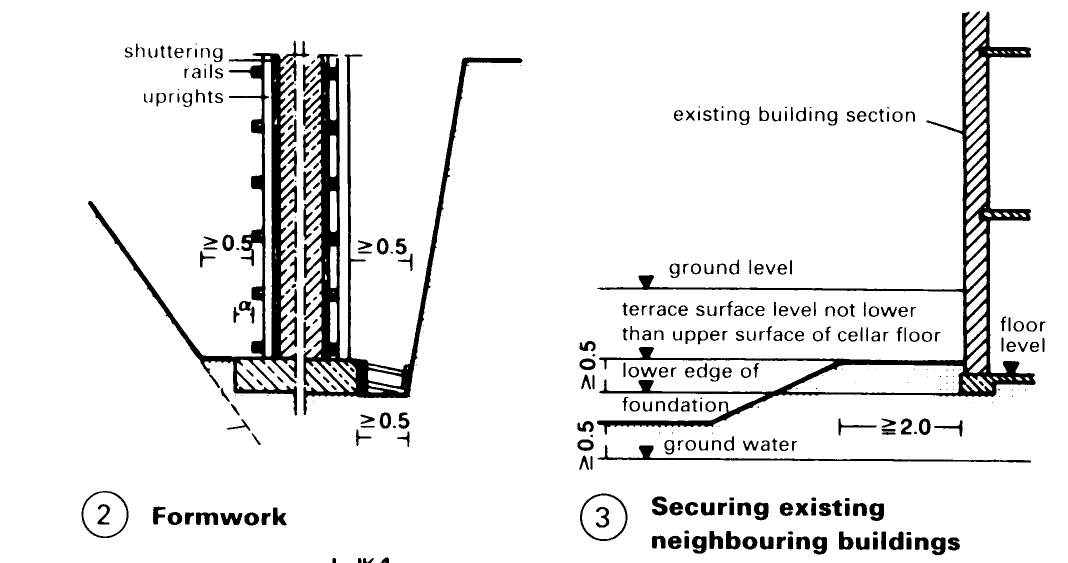Foundations, Excavation, Trenches. Surveying, site investigation, appraisal
Surveying, site investigation, appraisal. Failure to accurately assess the building site and water table conditions and to specify the correct foundations generally leads to irreparable structural damage and serious cost overruns.
Lateral ground displacement due to the load on the foundations causes the foundations to sink into the ground or become laterally displaced. This leads to total failure of the foundations.

Settlement due to compression of the building site under the foundations due to the load on the foundations and/or loads caused by neighbouring structures leads to deformations and damage (cracks) in the superstructure.
Where there is adequate local knowledge of the nature, mechanical properties, stratification and bearing strength of the sub-soil layers, calculations can be made which determine the dimensions of shallow foundations (individual and strip foundations; foundation pads and rafts) and deep foundations (pile foundations). If such knowledge is not available, timely investigation of the ground is required, if possible in consultation with an appropriate expert. This involves examination of the strata by excavation (manual or mechanical excavator), borings (auger/rotary bit or core drilling) with the extraction of samples and probes. The number and depth of inspections required depends on the topography, type of building and information available.

The depth of the ground water table can be investigated by inserting measuring pipes into boreholes and taking regular measurements (water table fluctuations). The ground water samples should also be tested to assess whether it is aggressive towards concrete (i.e. presence of sulphates, etc.).
Ground probes (and sample cores) are used to investigate granular composition, water content, consistency, density, compressibility, shear strength and permeability. Probes provide continuous information on soil strength and density as they penetrate the various subsoil layers.
All test results and the opinion of an expert site investigator should be brought to the attention of the building supervisors.
Consult local and national standards for ground (rock) descriptions, classification of earthworks, sub-soil characteristics, stratification, ground water conditions, necessary foundation/excavation depths, calculation of excavation material quantities, and construction and safety of excavations.


Site and Building Measurement. The building site must be surveyed and the plan of the proposed house entered on the official site plan – (1) - (2). When the requirements of the planning and building regulations have been met and planning permission granted, the foundations are pegged out as shown by wooden pegs and horizontal site boards - (4) - (8). The excavation must exceed the cross-sectional area of the house to provide adequate working space >500mm – (4) – (5). The slope of the sides of the excavation depends on the ground type; the sandier the soil, the flatter the slope > (4).


After excavation, string lines are tightly stretched between the site boards - (8) to mark out the external dimensions of the building. The outside corners of the house are given at the crossing points of the lines by plumb bobs. The correct level must be measured - (7). Dimensions are orientated by fixed points in the surroundings. Setting boards – (10), of wood or aluminium, 3m long, with a level built-in or fixed on top, are installed horizontally with the ends supported on posts. Intermediate contour heights are measured with a scaled rod.


A water-filled, transparent, flexible hose 20-30 m long, with glass tube sections at each end marked out in mm, when held vertically, is used to read water levels. After calibrating by holding both glass tubes together, levels between points on the site can be compared accurately to the mm, without the need for visual contact (e.g. in different rooms).
Date added: 2023-01-01; views: 665;
